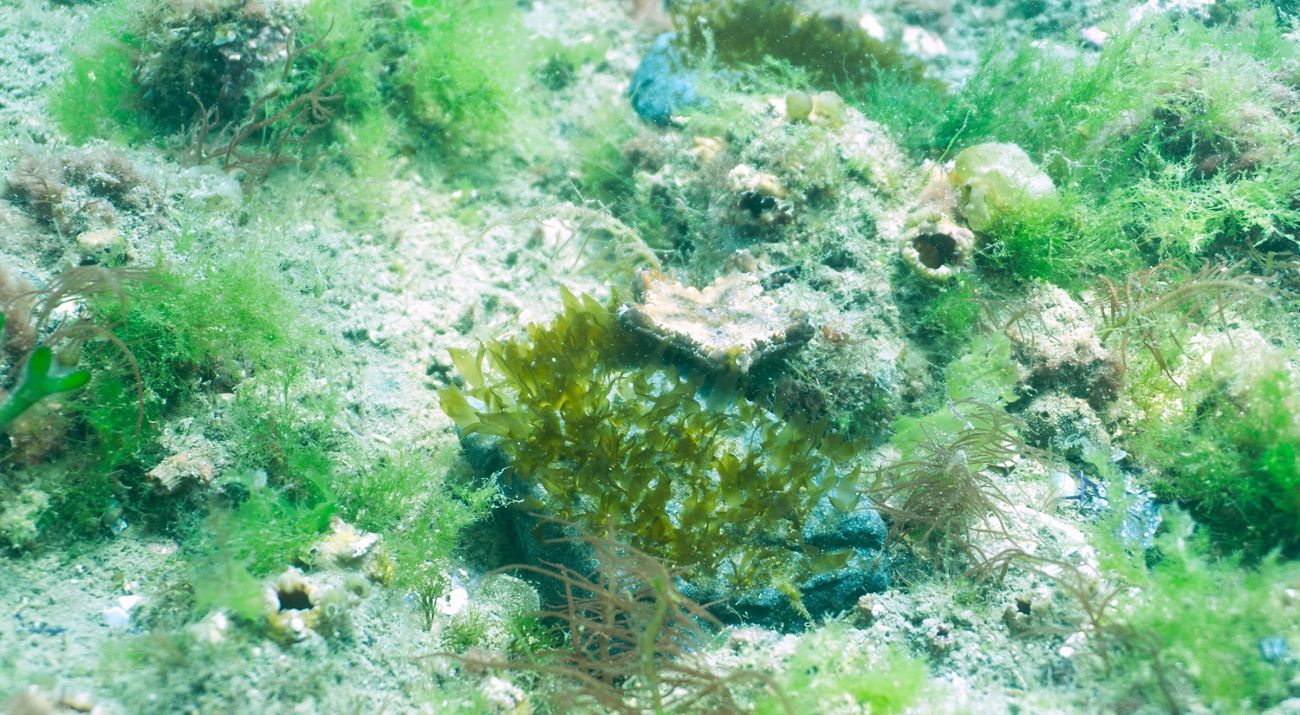Reefs in Port Phillip Bay welcome thousands of baby kelp to help restore lost kelp forests in first ever trials in Victoria
Media Contacts
-
Vanessa Billy
Communications Manager
The Nature Conservancy Australia
Mobile: 0478 638 180
Email: vanessa.billy@tnc.org
The Nature Conservancy Australia (TNC) and its partners, Deakin University, the University of Melbourne and Parks Victoria, announced today that, as part of the first ever restoration trials in Victoria, over 100,000 baby kelp, grown from microscopic spores at the Deakin Queenscliff Marine Science Centre, have been outplanted on to rocky reefs at the Jawbone and Ricketts Point Marine Sanctuaries in Port Phillip Bay, Victoria.
This work is part of a project funded by the Victorian Government’s Department of Energy, Environment and Climate Action to trial and develop techniques to address the loss of Golden Kelp and other native macroalgae that form kelp forest habitats in Port Phillip Bay.
Over the past year, researchers at Deakin University have developed techniques to grow kelp in the laboratory, starting with microscopic spores released by kelp tissue.
The baby kelp was nurtured in the laboratory for about ten weeks before being outplanted into the Bay.
“The kelp loss in Port Phillip has been so widespread that, in many areas, we wouldn’t see kelp recover on its own without a bit of extra help from us,” Dr Paul Carnell, from Deakin University’s Blue Carbon Lab, said.
“The lessons we have learnt during this project will also inform future up-scaling of kelp restoration. With an estimated 2,000 ha of degraded reefs in Port Phillip, we have a big job ahead of us!"
“Our cultivation team have been able to establish ongoing Golden Kelp cultures to not only assist with this restoration initiative, but the cultures can also be used for future restoration projects in Port Phillip Bay.”
Over the past few months, divers from TNC have outplanted over 100,000 kelp grown on cotton twine and gravel onto rocky reefs in ‘urchin barrens’ in the Jawbone Marine Sanctuary in Williamstown and Ricketts Point Marine Sanctuary in Beaumaris in the first stage of the pilot trials. Over time, the kelp is expected to mature and attach itself to the rocky reef substrate, with the first batch of kelp planted out earlier in the year now about 10cm in size.
Scott Breschkin, TNC’s Seascapes Conservation Officer for Victoria, said that kelp forests in Port Phillip Bay have undergone significant decline in the last two decades.
“One of the main reasons for the decline is the increased abundance and overgrazing by native Purple Urchins (Heliocidaris erythrogramma),” Mr Breschkin said. “This has led to kelp forest and macroalgae habitats being replaced by urchin barrens, which appear as areas of bare rock, devoid of much marine life except for urchins.”
The trials currently focus on restoring kelp in Port Phillip Bay’s marine sanctuaries, which were established in 2002 to protect representative and important marine habitats across the state.
Quote: Scott Breschkin
Kelp forests form the backbone of Australia’s Great Southern Reef and support a wide range of marine life including fish, crustaceans, shellfish and other algae, many of which are unique to southern Australia, with over 70% of species in some groups not being found anywhere else in the world.
“Kelp forests also support Australia’s high value abalone and crayfish fisheries, coastal tourism and recreational industries. For marine sanctuaries to achieve their purpose of supporting and protecting biodiversity, we need to prevent the loss of, and restore, these important habitats,” he said.
For more information on Port Phillip Bay’s Golden Kelp restoration project, click here.
The Nature Conservancy is a global conservation organisation dedicated to conserving the lands and waters on which all life depends. Guided by science, we focus on getting things done efficiently and with the greatest positive impact for conservation. We’re a trusted organisation working in more than 70 countries and territories around the world on innovative solutions to our world’s toughest challenges so that nature and people can thrive together. To learn more about The Nature Conservancy in Australia, follow us on Facebook.
